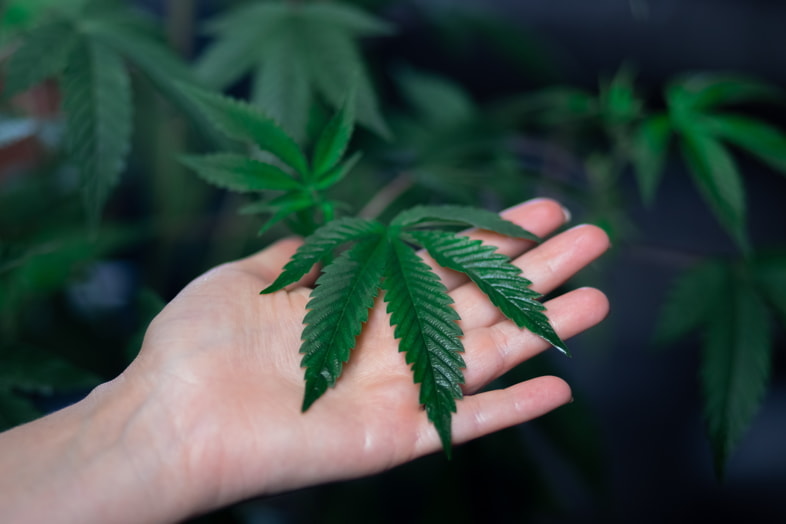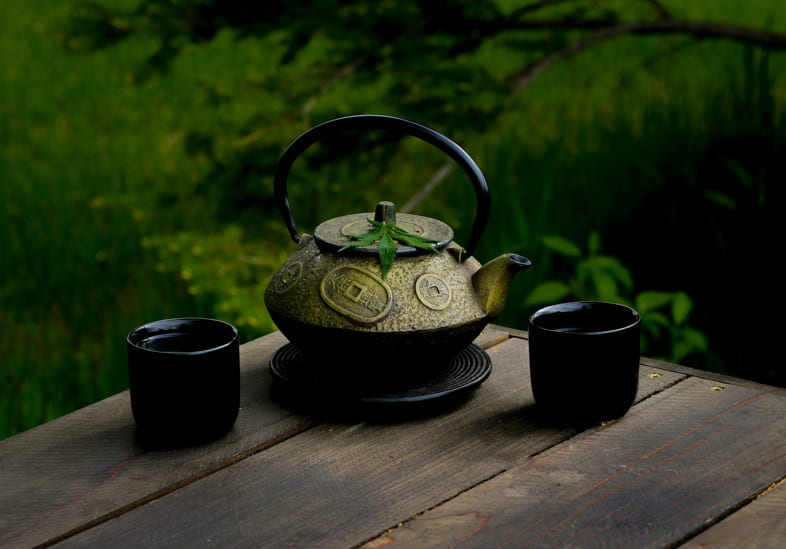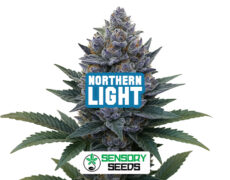Modified on: 20/09/2022
The symbol of cannabis par excellence, but do we know it?
The ethical issue surrounding cannabis and its uses is, today more than ever, still very controversial, despite the various scientific confirmations of its potential beneficial effects.
In several states, the use of marijuana for medicinal purposes has been very successful, mainly due to the lack of side effects.
The inflorescences are rich in active ingredients that can alleviate symptoms of various kinds when used in the right way.
Moreover, the cannabis plant has many uses in various sectors besides the therapeutic one, such as the green building and textile industries. It is a high-yield crop, thanks to using all its parts for different purposes.
Let us, therefore, get to know it better, delving into the characteristics and uses of its leaves.
Read also: Does cannabis make you slim? Its effects on metabolism
What are the characteristics of marijuana leaves? And how to recognise them?


When you think of marijuana leaves, the classic image depicted on Jamaican-style lighters and T-shirts will undoubtedly come to mind.
That is indeed a cannabis leaf, but you may not know that there are many different types.
The leaf of the Sativa variety, for example, is elongated and thin in shape and has the peculiarity of having pronounced serrations.
In terms of colour, Sativa cannabis leaves have a lighter shade of lime green than those of the indica variety.
Going into more detail, the percentage of chlorophyll present in this type of foliage is relatively low, allowing us to deduce that the flowering period of this plant is more extended than that of other marijuana qualities.
But is the structure of the leaves just an aesthetic issue?
Absolutely not. Depending on its shape and conformation, it is more or less suitable for specific cultivation methods.
In the specific case of the cannabis Sativa leaf, its thin structure allows sunlight to penetrate to the lowest levels, guaranteeing a good yield even with traditional cultivation.
Turning to the indica variety, on the other hand, the first thing that jumps out at you is the distinctly shorter and broader shape compared to the Sativa variety.
The width is the main peculiarity of the leaves of this quality and impacts how it is grown, especially indoors. Growers often resort to the so-called ScrOG method to maximise yields, but the structure of cannabis indica is not suited to this technique. In addition, the extensive leaves would prevent light from penetrating to lower levels, thus compromising the plant’s growth.
The dark green colour of these leaves indicates a high concentration of chlorophyll, which seems to facilitate flowering, considerably reducing the time.
A further cannabis variant is the ruderalis. As can be easily deduced from its name, this variety has the particularity of growing spontaneously on infertile soil.
Its origins are very ancient, and no particular uses of this variety are indicated.
As for the specificity of its leaves, they are thin and almost conical in shape. It could easily be confused with the Sativa, but the buds of the two varieties are very different. The inflorescences of the ruderalis are much smaller than the others and also less powerful.
To recap, we have briefly looked at the characteristics of the three main naturally occurring cannabis strains, but as you may know, hybrid varieties have also been created over time.
Let’s take a look at what a hybrid cannabis leaf looks like.
As you might imagine, the hybrid variety – the term we use to encompass all types in this category – has characteristics of both Sativa and indica qualities.
The hybrid leaf is intermediate in size and width and lies somewhere between the two.
But what are the functions of this part of the plant?
Read also: Aeroponic systems for cannabis cultivation: primary advantages and disadvantages
The function of marijuana leaves is fundamental to the life of the plant
Cannabis is a plant and, as such, needs specific processes to live. The main one is undoubtedly chlorophyll photosynthesis.
Put simply, plants derive their life energy from sunlight. But how? Leaves absorb light, just like mini solar panels, and take care of turning it into sap, an essential nutrient.
At the same time, leaves absorb carbon dioxide and release oxygen into the air.
Furthermore, through careful observation of the foliage, it is possible to gain valuable information about the plant’s health. For example, the visible consequences of problems such as insufficient or excessive watering, lack of light or lack of nutrients in the soil are very clearly reflected on the leaves, which can be yellowed, spotty, dry or curled up depending on the deficiency they are suffering.
In short, knowing the leaves is essential to detect any problems at an early stage, which can lead, in the worst-case scenario, to the death of your seedling.
Now that we understand what leaves are used for and what functions they perform let’s see if and how we can use them.
What can marijuana leaves be used for?
As we have seen, cannabis leaves perform an essential function during the plant’s life. You may already know that when marijuana is grown – in the places and with the methods permitted by law – the aim is to harvest the inflorescences, a concentrate of active ingredients.
But is there any way to do justice to the poor leaves after all their work to grow the plant?
Of course, there is. The foliage is, in fact, an excellent additional source of THC and CBD, even if their concentration here is much lower than in the flowers.
After pruning, you can use them in various ways in countries where this is permitted by law. Among the main ones are:
- – the steaming of the dried leaves;
- – the preparation of edibles such as butter and oil for use in various recipes;
- – the preparation of infusions with the fresh leaves that do not have the psychoactive properties of the dried buds;
- – the cannabis milkshake;
- – the creation of do-it-yourself face and body lotions.


As you can see, the uses are varied, and it would be a shame to throw them away.
In conclusion: are you throwing away the leaves? A real shame
Marijuana leaves can tell you a lot if you know how to observe them.
Firstly, they can tell you which variety of cannabis it is. First of all, they can tell you which variety of cannabis it is. For example, the thin, elongated shape is typical of sativas, whereas wide, short leaves are typical of indicas.
Secondly, they reflect the health of the plant. Yellowed or curled leaves are a significant warning sign, and if you are faced with this scenario, you need to re-evaluate the amount of water, nutrients and light you are giving the cannabis.
Finally, although they are not comparable to inflorescences in terms of concentration of active ingredients, they can be used in various ways, minimising waste after pruning.
If you are interested in learning more about the world of cannabis, drop by our Sensoryseeds.com site. You will find the best collectable weed seeds in three varieties: autoflowering seeds, feminised seeds and fast flowering seeds.









